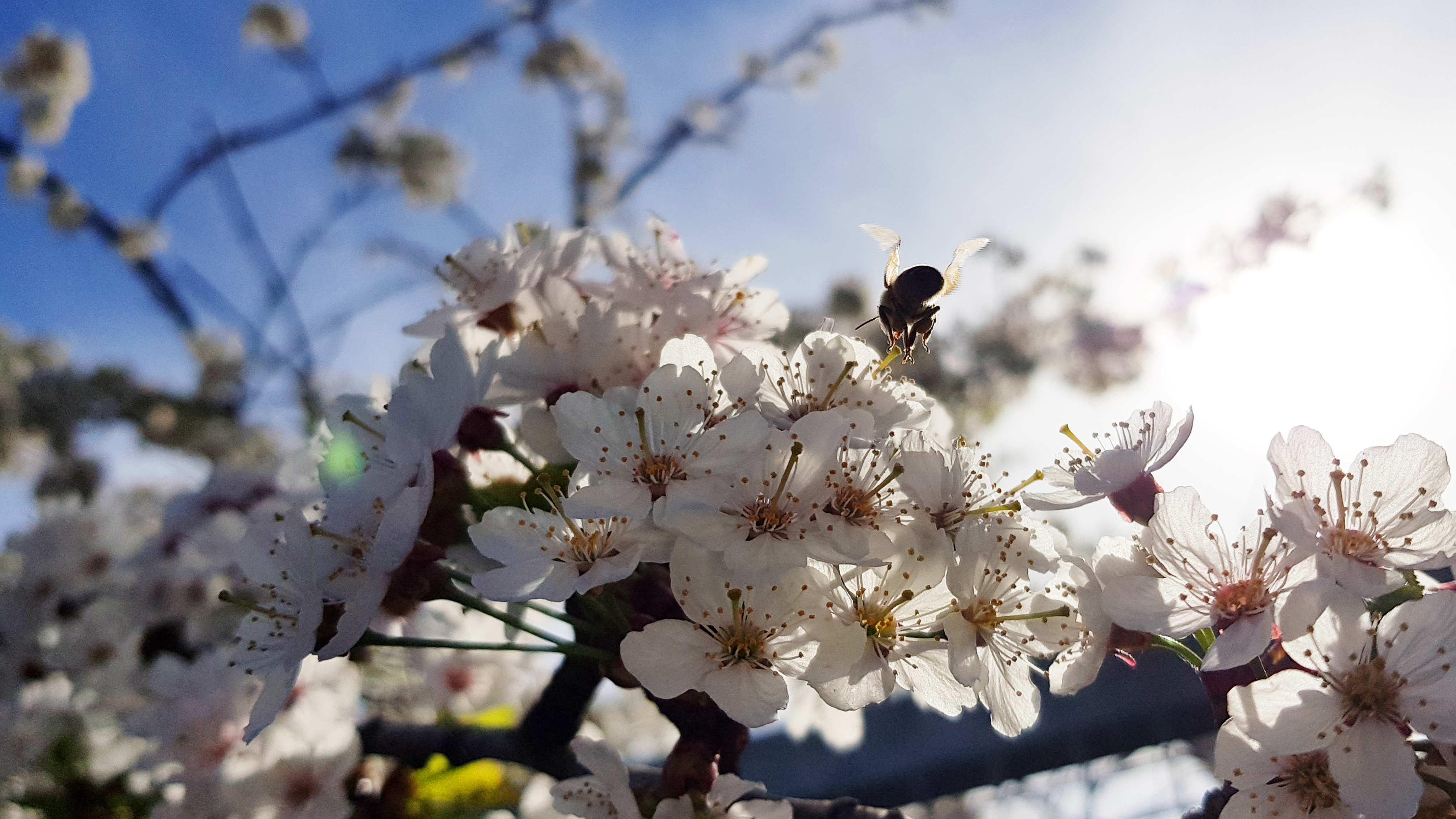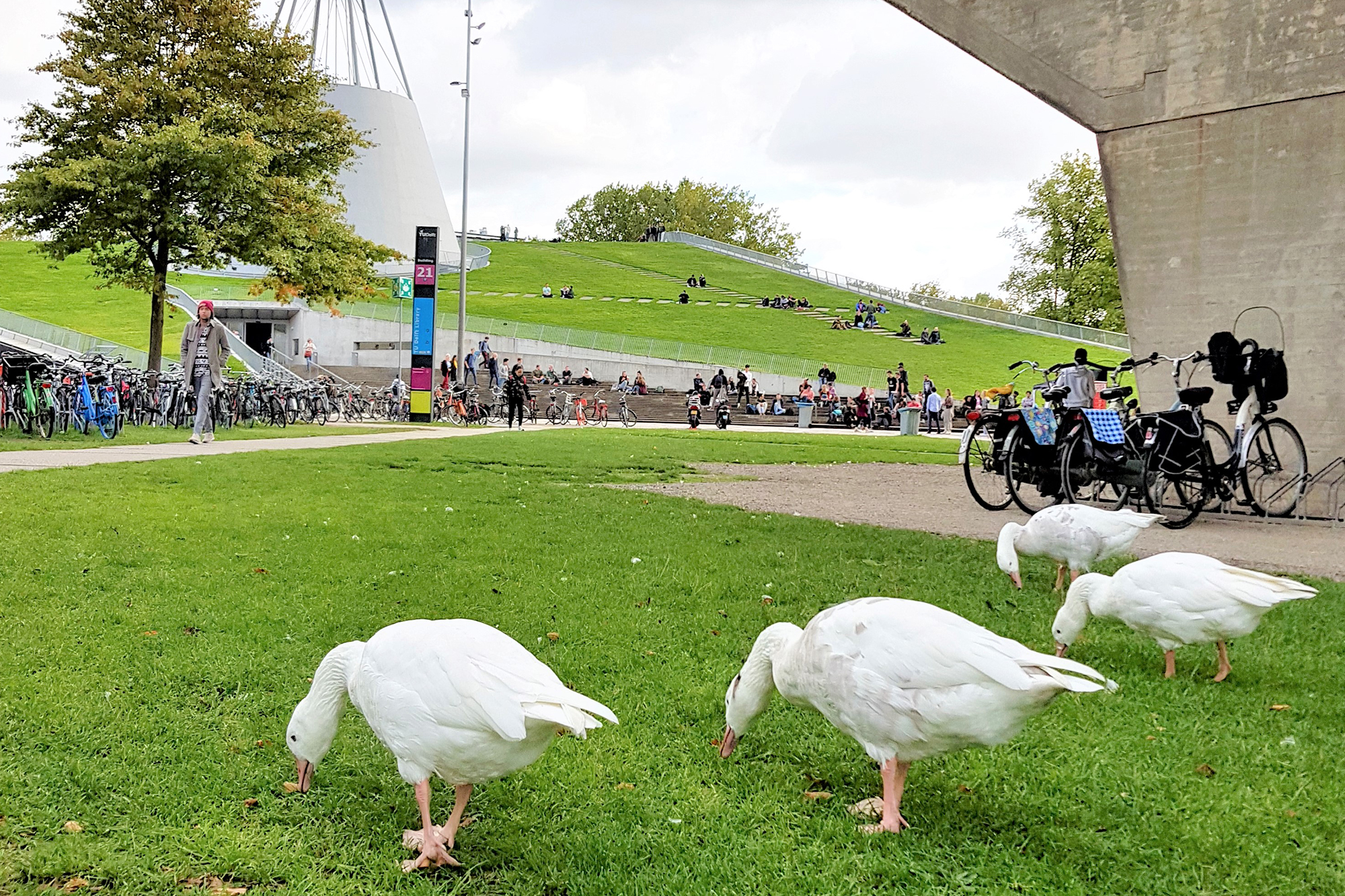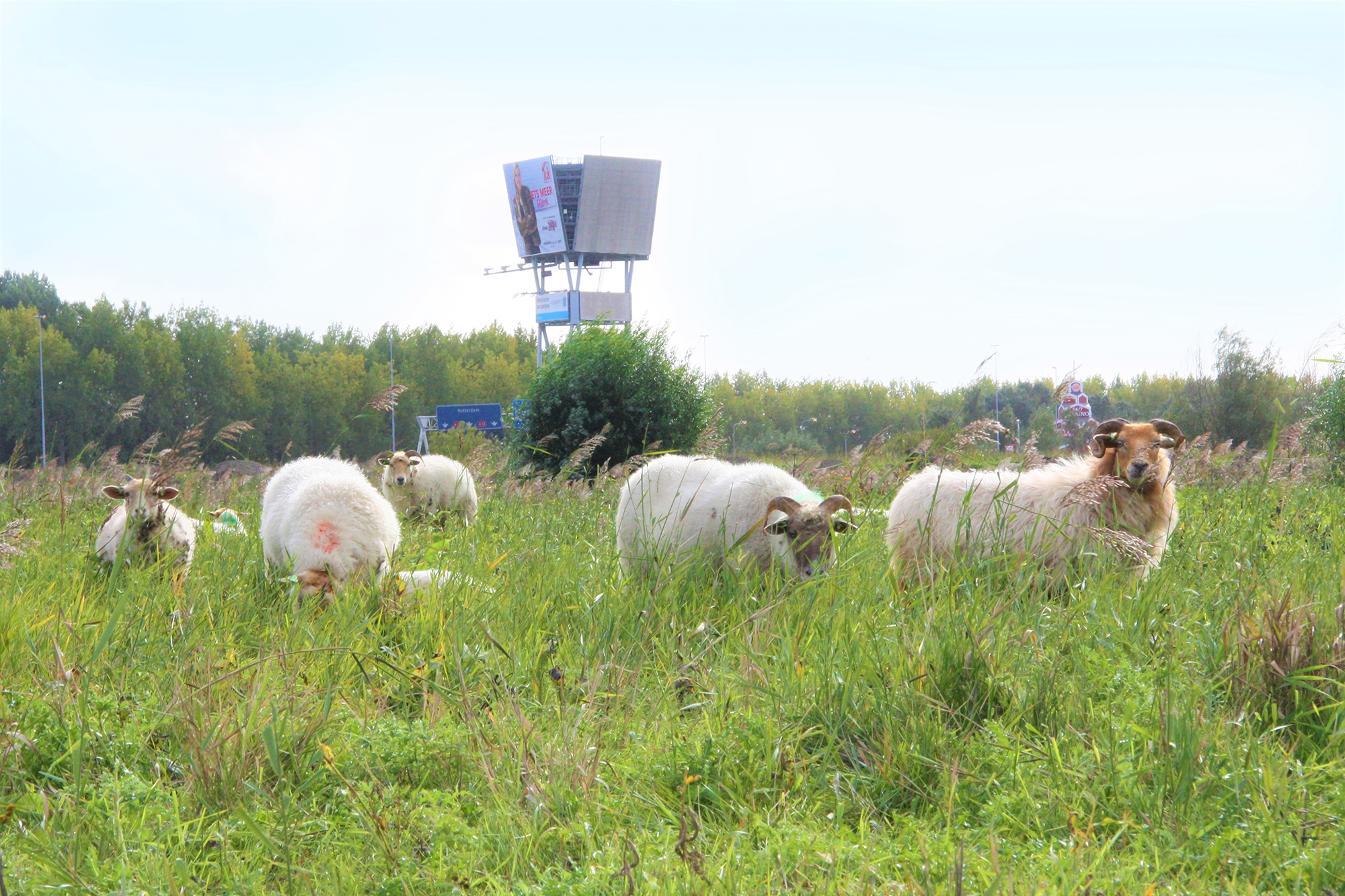Biodiversity on campus
Early in 2000, as students tucked into their sandwiches sitting atop the TU Delft Library, the newly grassed roof of the building was a source of inspiration, providing impetus to make the campus even greener. More and more space was created for green areas, recreation and places to meet. The central road intersecting the campus disappeared and the parking spaces were moved to the rear of the buildings. In 2008, Mekelpark was added: a green space for staff and students to meet and relax.
TU Delft is keen to connect the nature on its fringes with the green heart of the campus, with a focus on nature values. Plans for this are underway – plans that are seeing increasingly close collaboration between colleagues from Plants Maintenance and the Campus Development department.

TU Delft is also working hard when it comes to biodiversity. Chemicals are no longer used to treat weeds on pavements. Flower seed blends are sown where possible, helping to support the insect population. Alongside roads including Leeghwaterstraat and Huismansingel, flower strips have been sown with varieties already naturally present in the area. Poppies for example, but also daisies, clover and certain types of thistle. All these flowers attract bees and butterflies. René Hoonhout, Plants Maintenance team leader: “More insects means more birds. Varieties naturally found here will flourish and will also help to improve biodiversity. And aside from that, it is of course nice to take a stroll in your lunch break and be able to enjoy the nature on campus.”
On the outskirts of the campus, nature is being left completely to its own devices, and the management of these areas is as sustainable as possible. For example, to the south of the campus, a flock of sheep keeps the grass trimmed.



